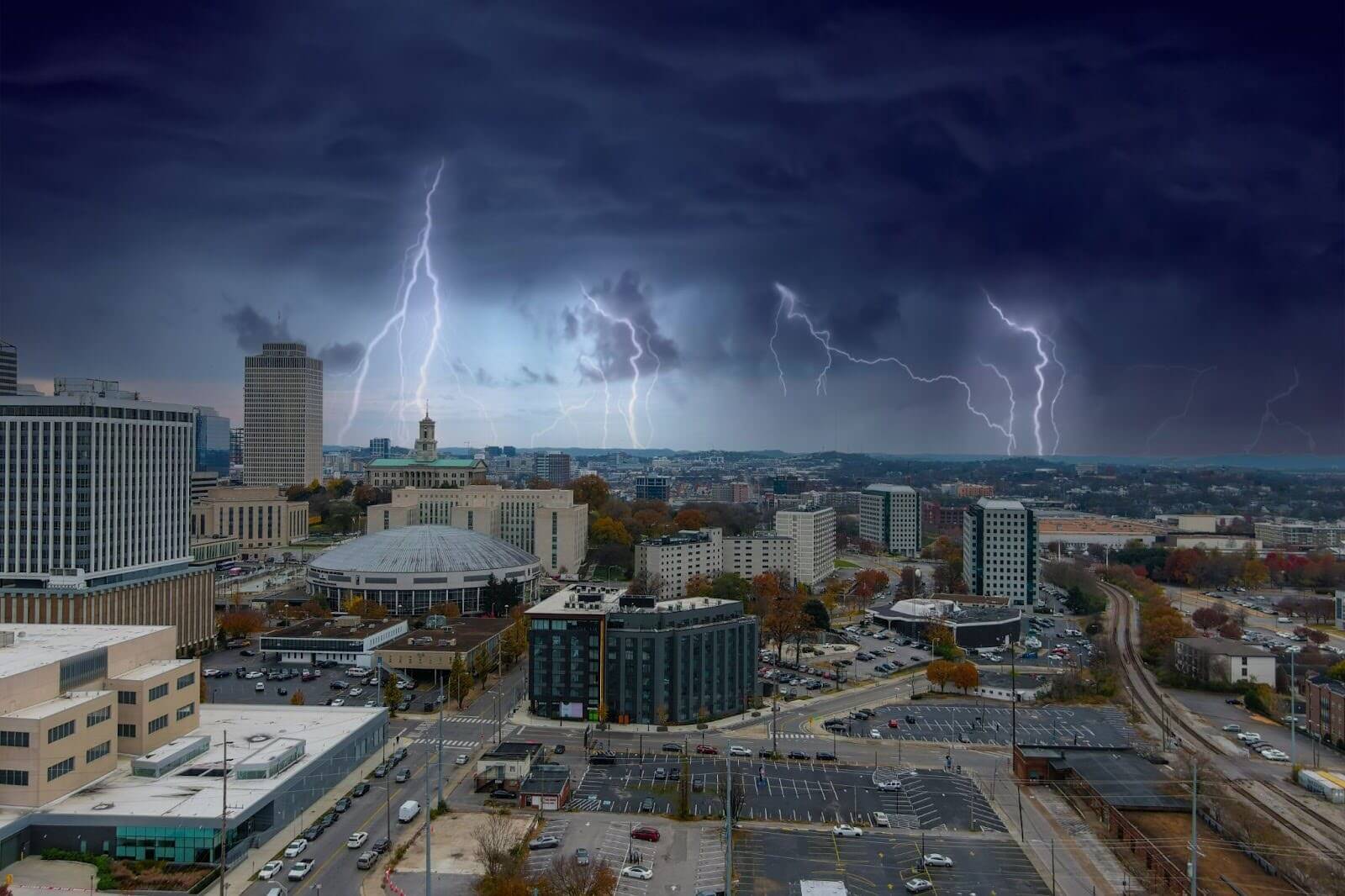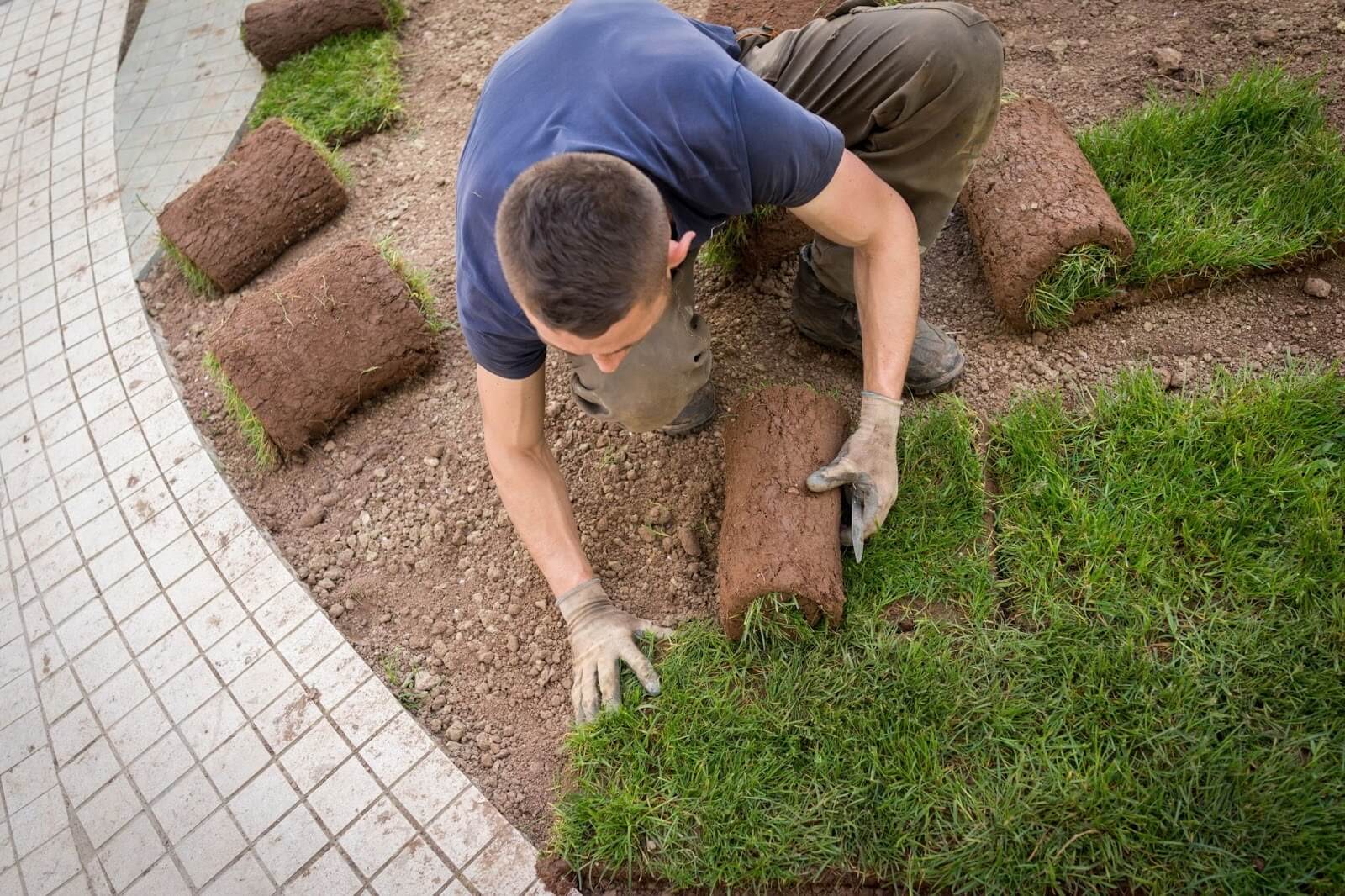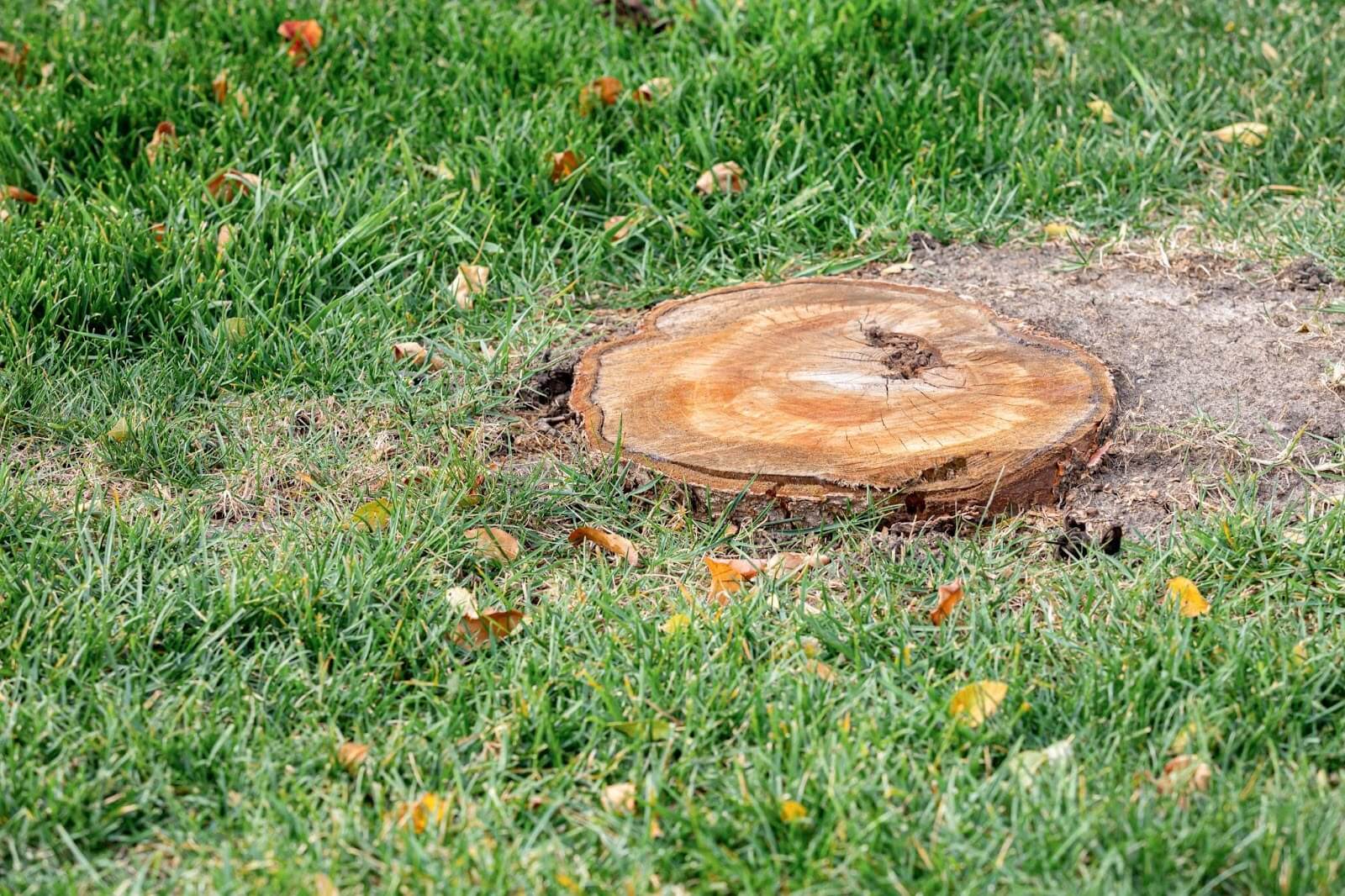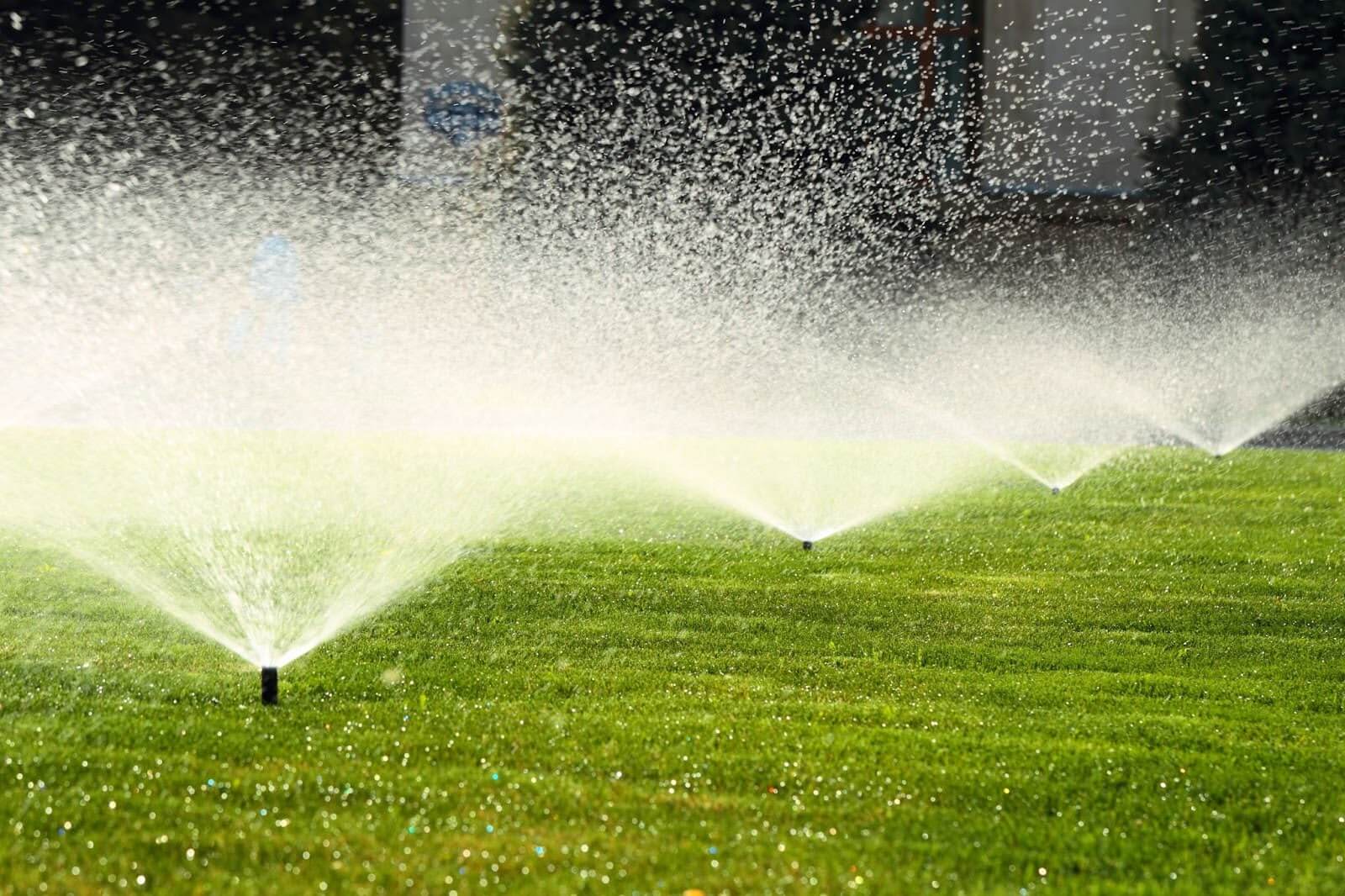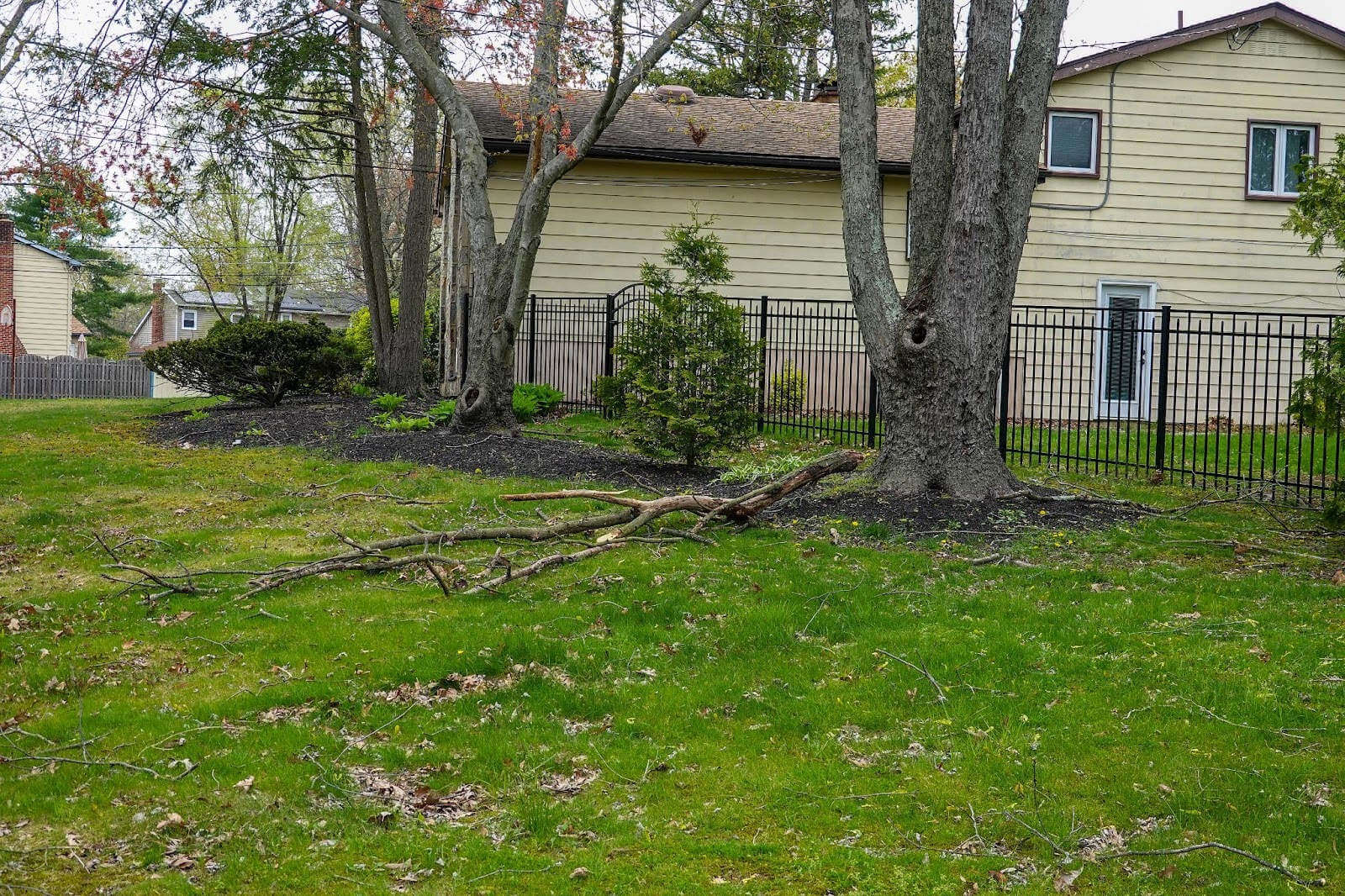Summer is all about green grass, ducking under the shade of a tree, and relaxing, but Mother Nature doesn’t always cooperate with our plans. Here are some of the ways Nashville summer storms threaten your trees and landscaping.
Ways Nashville Summer Storms Threaten Your Trees and Landscaping
1. High Winds
Nashville residents are unfortunately no strangers to tornadoes in the spring and summer, but even without a cyclone, a severe storm can cause wind damage. Summer storms are formed when high- and low-pressure fronts meet, and while precipitation is the primary result of this, wind is also produced. Atmospheric winds can be drawn down by this confluence of high and low pressures and temperatures meeting. Rain creates wind, too. These downdrafts occur as pressure from the precipitation pushes air downward, deflecting off the ground and spreading out in all directions. These are called downbursts and can produce winds of 100 miles per hour over a small area.
Wind is especially damaging to trees and other larger parts of your home’s landscape. Storm-damaged trees can fall or shed large limbs during heavy winds, potentially damaging your property, home, and people and animals in the area. Wind is a powerful and destructive force of nature that we need to be prepared for, and one of the best ways to get your property ready for a summer storm is to take care of your trees.
Signs of disease or weakness in a tree are not often obvious to the naked, untrained eye, so it’s important to contact a professional arborist to take a look at your property and determine the health of your trees. When it comes to which trees fall in storms, it’s usually the ones that are the least healthy. A large dead or dying tree is easily toppled by heavy or even moderately severe winds from a summer storm. This is even more likely in the summer because leaves catch more wind and can cause the tree to become uprooted or break quickly. Preparing your property for high winds is critical, and you should try to have your trees pruned and maintained by licensed tree service professionals yearly to prevent costly damage.
2. Heavy Rain
Water can be a destructive force, so it’s no surprise that torrential rain can be very bad for your property. A severe storm in Nashville can produce more than an inch of rain in just hours. Flooding from rain can wash away plants in your landscaping and cause oversaturation of your lawn, leading to dead grass or fungal growth. Rain’s erosive properties can expose tree roots, wash away topsoil and mulch, and flood your home’s foundation or basement.
Water damage accounts for a huge amount of property damage each year in Nashville and across the country. Preparing your landscaping for storms is the best way to ensure that rain damage is kept to a minimum during the summer months. Planting hardy bushes and grasses with deep roots can prevent erosion, keeping your topsoil where it belongs and preventing damage to your garden or lawn. Installing or improving existing drainage on the property, as well as using techniques like a French drain or channel drain, can ensure that standing water doesn’t accumulate in your yard. Installing proper drainage at the ground level and on your home with gutters and catch basins can keep water from damaging your property during a storm.
3. Hail
Hail doesn’t always happen during a severe summer storm, but when it does, its effects can be costly. Hail often accompanies storms that also can produce tornadoes, making it a dangerous precursor to even more destruction. Hail can destroy tree branches, rip leaves off trees and shrubs, and completely obliterate flowers and other plants in your garden. Tree storm damage from hail alone doesn’t usually cause a tree to fall, but it can knock off small limbs and cause extensive damage to a tree.
Hail damage to trees during summer storms can lead to disease and eventual death if the tree is neglected. Cleanup after a hailstorm needs to include pruning to ensure that damaged limbs are properly removed to keep pests and diseases from entering the tree through its wounds. Hail is unfortunately hard to plan for, but if it’s in your weather forecast, there are some quick preparations you can make to protect your landscape. Installing hail cloth or netting if your area is especially susceptible to hail storms can mean the difference between a smashed garden and one that survives. Having routine tree service remove weak limbs that are susceptible to hail damage can also prevent more costly damage to your property from fallen limbs.
4. Lightning
Lightning forms as a result of the massive amounts of electricity that storm clouds can generate. This deadly force of nature happens often during severe summer storms, striking hundreds or thousands of times in a single storm system. Lightning is somewhat predictable, usually seeking the highest point in a given area, but lightning is by no means easy to avoid. Saturated ground, tree root systems, and clusters of large trees can all create dangerous conditions on the ground, even far from the struck tree. Whenever lightning is observed, it’s important to stay indoors and away from windows, avoiding showers and other conductive components of the home, like hardwired appliances or electronics.
One way to prevent lightning strikes on your property is tree removal. Removing the tallest, most mature trees from your property makes the area less susceptible to lightning strikes. Know, however, that lightning can still strike your home or smaller trees, even if larger trees are in the area. Lightning can cause extensive damage to trees and your lawn, as the sheer amounts of electricity in a strike can set fires and instantly burn anything in its arcing path. There are ways to protect your trees from lightning damage during summer storms, however. You cannot prevent strikes, but certain technology can minimize the harm done to your large trees in the event that they’re struck. Arborists can install lightning rods in large trees to help dissipate the shock, spreading it and sparing your tree from extensive lightning damage. This can prevent property damage and costly emergency tree removal services.
Preserve Your Landscape Against Storms
Severe summer storms are a fact of life in Nashville, but you can prepare your property for them with the help of a trustworthy landscaping company. Be proactive with your tree and landscape maintenance and work with the pros at The Parke Company.

